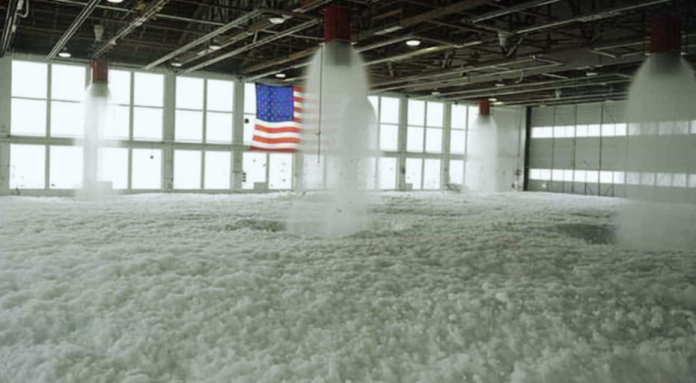Aqueous Film Forming Foam (AFFF) has been essential for fighting intense fires, especially those fueled by oil and gasoline. This foam, however, is not without its controversies due to its composition—per- and polyfluoroalkyl substances (PFAS).
These chemicals are notorious for their persistence in the environment and potential links to serious health issues, including cancer. As awareness of these risks has increased, so have the legal challenges. Click here to learn more about the environmental impact and the complex legal landscape surrounding these substances.
Among the prominent defendants in these legal battles are major corporations like 3M, DuPont, and Chemours, which we will explore in detail throughout this article.
Primary Defendants in the AFFF Lawsuit
3M Company
3M has been a central figure in the AFFF saga. They were one of the first companies to develop and manufacture AFFF firefighting foam in the 1960s. Their AFFF products, known commercially under names like Light Water and FC-200, were widely used by fire departments and military installations for decades.
DuPont and Chemours (spin-off)
The DuPont Company was another major player in the production of AFFF. In 2015, DuPont spun off its chemical production division into a separate company called Chemours. Both companies have been named as defendants in AFFF lawsuits due to their role in supplying key chemical components used in AFFF formulations.
Other Potential Defendants
Besides 3M and DuPont/Chemours, other companies may be involved in the AFFF lawsuits. These include manufacturers that produce AFFF using similar firefighting foam technology, such as Tyco Fire Products and Chemguard. Companies that supply the specific fluorochemical components used in AFFF formulations may also be facing legal action. The exact list of defendants can vary depending on the specific lawsuit.
Allegations Against the Defendants
The central allegations against the AFFF manufacturers revolve around severe claims of misconduct. Key among these is the accusation that companies like 3M, DuPont, and Chemours knew the potential health risks associated with PFAS chemicals, which are found in AFFF, but chose not to disclose these dangers to the public.
Lawsuits argue that these companies understood the carcinogenic and environmentally persistent nature of PFAS yet failed to adequately warn firefighters and communities that were in direct contact with the foam.
This alleged failure to communicate risks and the potential deception have sparked widespread legal action as affected parties seek accountability for health problems and environmental damage they attribute to exposure to these toxic substances.
Potential Defenses
The AFFF manufacturers facing lawsuits are likely to raise several defenses in court. These might include:
- Compliance with Regulations: They may argue that their AFFF products met all existing safety standards and regulations during manufacture and sale.
- Lack of Conclusive Scientific Evidence: The defendants may contend that the scientific evidence linking AFFF exposure to specific illnesses is inconclusive. They might argue that more research is needed to establish a clear cause-and-effect relationship.
- State-of-the-Art Defense: In some cases, they might claim they followed the prevailing industry practices and standards for AFFF production at the time.
Current Status of the Lawsuits
The legal landscape surrounding AFFF and PFAS is complex, with numerous cases consolidated into a Multi-District Litigation (MDL) to streamline proceedings. This MDL encompasses various lawsuits filed across multiple states, centralizing them under one court to improve efficiency and consistency in rulings.
While the legal process is ongoing, significant developments have occurred, including settlements with certain defendants. For instance, 3M has agreed to a substantial settlement to resolve allegations without admitting liability or wrongdoing.
These settlements are part of a broader effort to address the claims of health and environmental damages purportedly caused by exposure to PFAS-laden firefighting foams.
Conclusion
The AFFF lawsuits have spotlighted major defendants like 3M, DuPont, and Chemours for their roles in manufacturing firefighting foams containing PFAS. These legal battles are crucial as they seek to address significant public health and safety concerns, highlighting the need for accountability and safer environmental practices.

